
IT solutions integrator Insight Enterprises (NASDAQ:NSIT) missed Wall Street’s revenue expectations in Q1 CY2025, with sales falling 11.6% year on year to $2.1 billion. Its non-GAAP profit of $2.06 per share was 2.5% above analysts’ consensus estimates.
Is now the time to buy Insight Enterprises? Find out by accessing our full research report, it’s free.
Insight Enterprises (NSIT) Q1 CY2025 Highlights:
- Revenue: $2.1 billion vs analyst estimates of $2.24 billion (11.6% year-on-year decline, 5.9% miss)
- Adjusted EPS: $2.06 vs analyst estimates of $2.01 (2.5% beat)
- Adjusted EBITDA: $111.3 million vs analyst estimates of $125 million (5.3% margin, 11% miss)
- Management reiterated its full-year Adjusted EPS guidance of $9.90 at the midpoint
- Operating Margin: 2.9%, down from 4.2% in the same quarter last year
- Free Cash Flow Margin: 3.4%, down from 10.1% in the same quarter last year
- Market Capitalization: $4.41 billion
"In the first quarter, we delivered Adjusted earnings from operations and Adjusted diluted earnings per share in line with our expectations. We were pleased with the continued hardware momentum, led by commercial and corporate demand, and our gross margin expansion,” stated Joyce Mullen, President and Chief Executive Officer.
Company Overview
With over 35 years of IT expertise and partnerships with more than 8,000 technology providers, Insight Enterprises (NASDAQ:NSIT) provides end-to-end digital transformation solutions that help businesses modernize their IT infrastructure and maximize the value of technology.
Sales Growth
Reviewing a company’s long-term sales performance reveals insights into its quality. Even a bad business can shine for one or two quarters, but a top-tier one grows for years.
With $8.43 billion in revenue over the past 12 months, Insight Enterprises is one of the larger companies in the business services industry and benefits from a well-known brand that influences purchasing decisions. However, its scale is a double-edged sword because it’s harder to find incremental growth when you’ve penetrated most of the market. To expand meaningfully, Insight Enterprises likely needs to tweak its prices, innovate with new offerings, or enter new markets.
As you can see below, Insight Enterprises struggled to increase demand as its $8.43 billion of sales for the trailing 12 months was close to its revenue five years ago. This shows demand was soft, a rough starting point for our analysis.
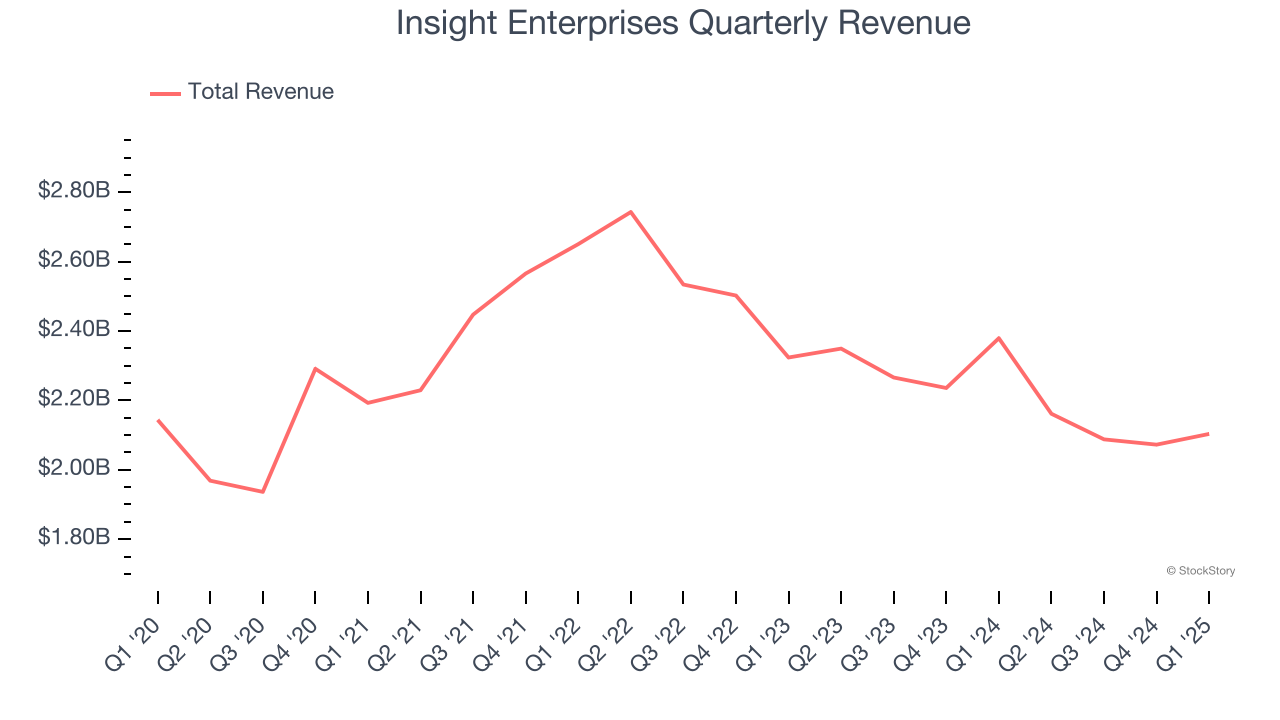
We at StockStory place the most emphasis on long-term growth, but within business services, a half-decade historical view may miss recent innovations or disruptive industry trends. Insight Enterprises’s recent performance shows its demand remained suppressed as its revenue has declined by 8.7% annually over the last two years. 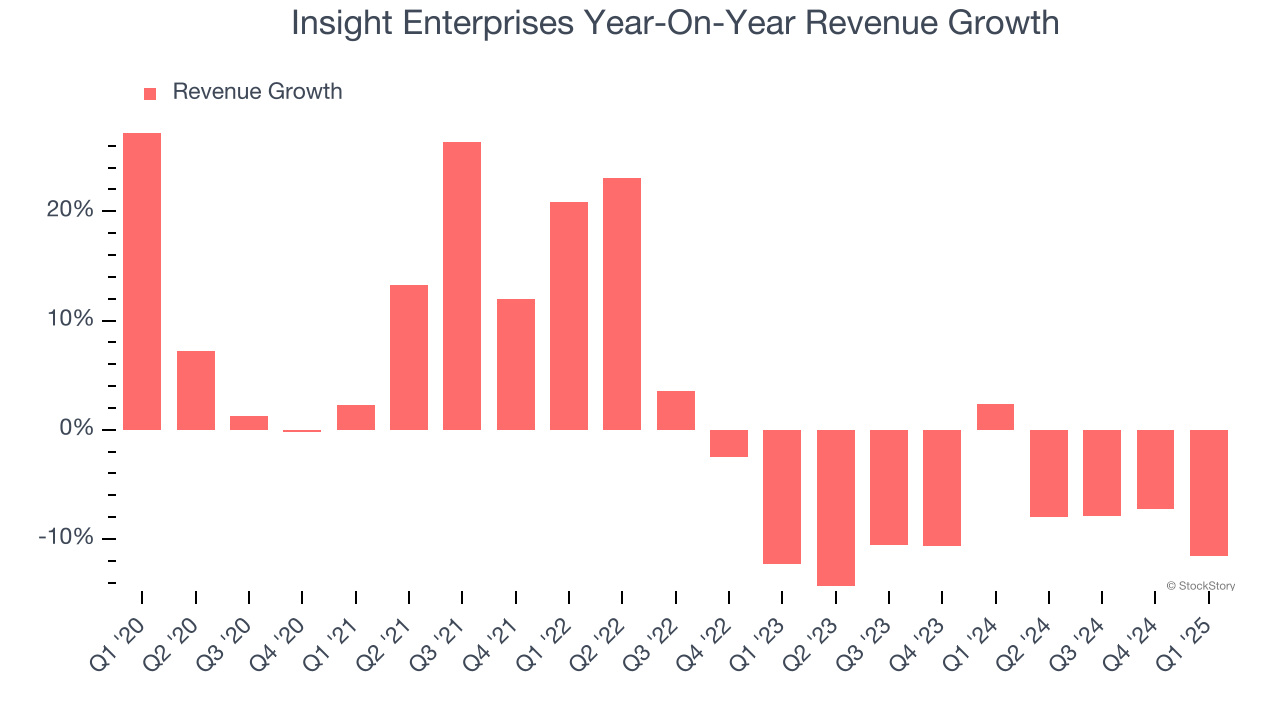
This quarter, Insight Enterprises missed Wall Street’s estimates and reported a rather uninspiring 11.6% year-on-year revenue decline, generating $2.1 billion of revenue.
Looking ahead, sell-side analysts expect revenue to grow 5.6% over the next 12 months, an improvement versus the last two years. This projection is above the sector average and implies its newer products and services will fuel better top-line performance.
Here at StockStory, we certainly understand the potential of thematic investing. Diverse winners from Microsoft (MSFT) to Alphabet (GOOG), Coca-Cola (KO) to Monster Beverage (MNST) could all have been identified as promising growth stories with a megatrend driving the growth. So, in that spirit, we’ve identified a relatively under-the-radar profitable growth stock benefiting from the rise of AI, available to you FREE via this link.
Operating Margin
Insight Enterprises was profitable over the last five years but held back by its large cost base. Its average operating margin of 4% was weak for a business services business.
Analyzing the trend in its profitability, Insight Enterprises’s operating margin might fluctuated slightly but has generally stayed the same over the last five years, which doesn’t help its cause.
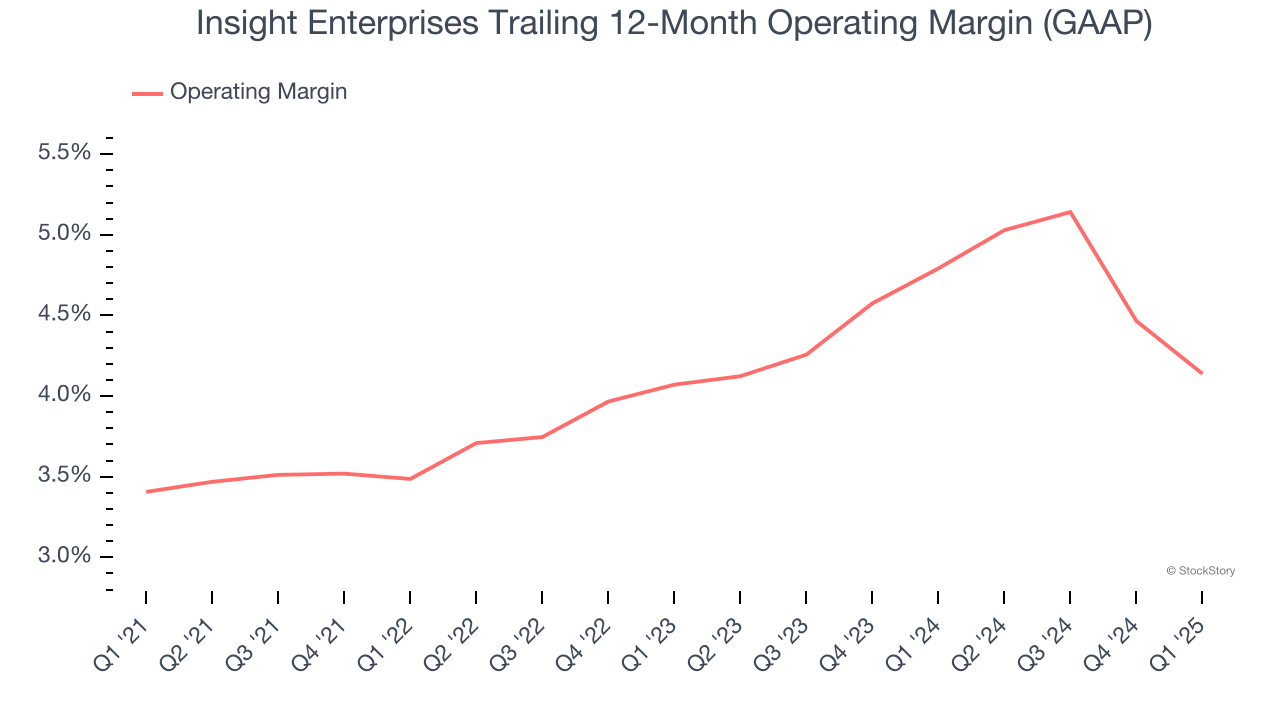
This quarter, Insight Enterprises generated an operating profit margin of 2.9%, down 1.3 percentage points year on year. This reduction is quite minuscule and indicates the company’s overall cost structure has been relatively stable.
Earnings Per Share
Revenue trends explain a company’s historical growth, but the long-term change in earnings per share (EPS) points to the profitability of that growth – for example, a company could inflate its sales through excessive spending on advertising and promotions.
Insight Enterprises’s EPS grew at a solid 9.6% compounded annual growth rate over the last five years, higher than its flat revenue. However, this alone doesn’t tell us much about its business quality because its operating margin didn’t expand.
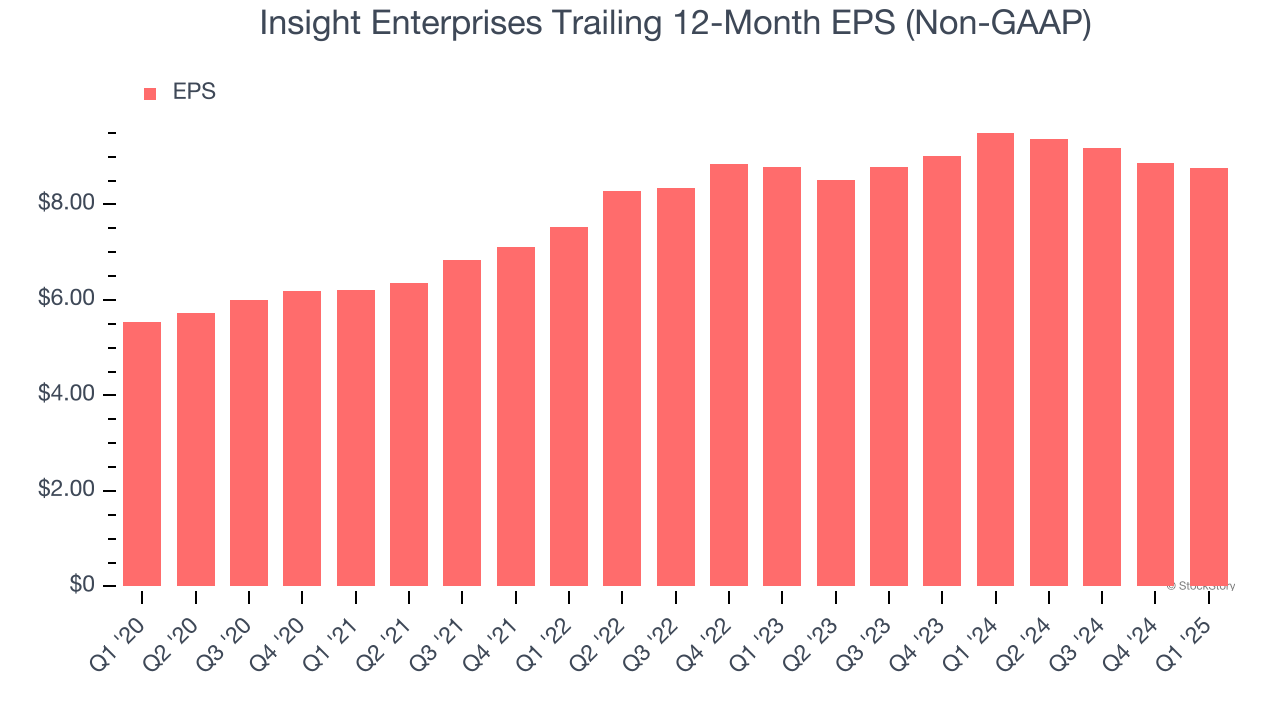
We can take a deeper look into Insight Enterprises’s earnings quality to better understand the drivers of its performance. A five-year view shows that Insight Enterprises has repurchased its stock, shrinking its share count by 2.7%. This tells us its EPS outperformed its revenue not because of increased operational efficiency but financial engineering, as buybacks boost per share earnings. 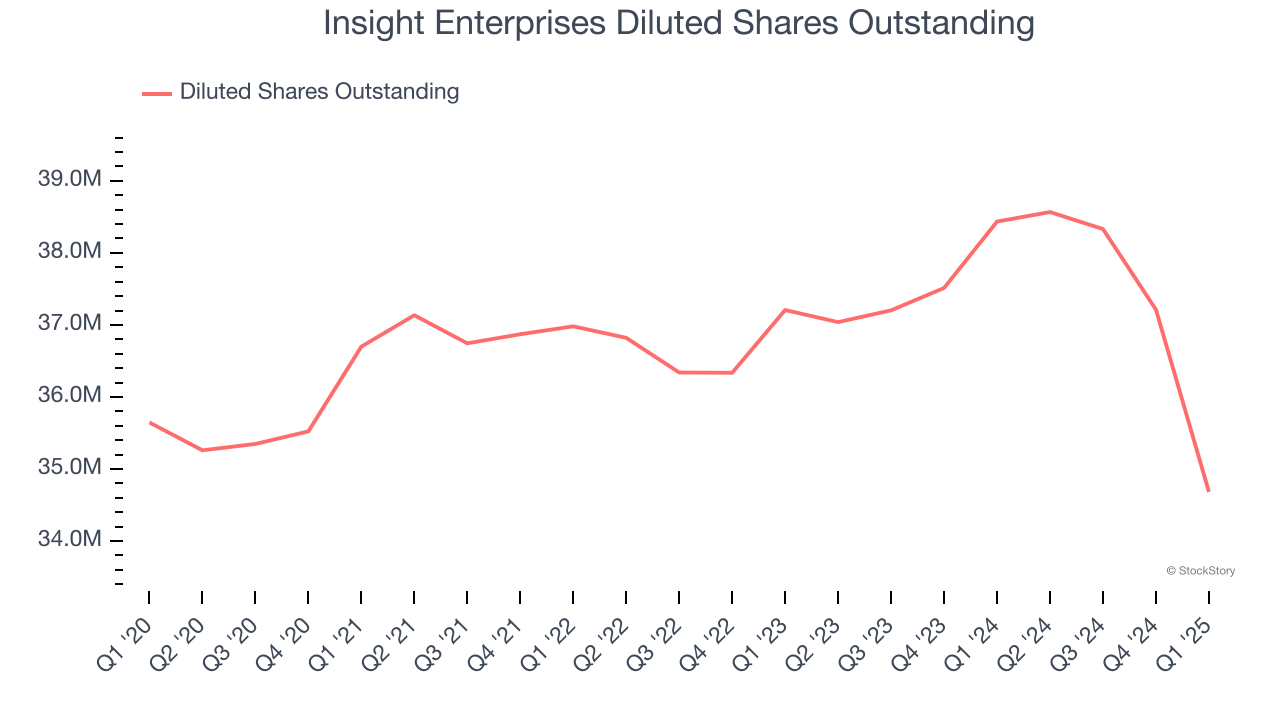
In Q1, Insight Enterprises reported EPS at $2.06, down from $2.17 in the same quarter last year. Despite falling year on year, this print beat analysts’ estimates by 2.5%. Over the next 12 months, Wall Street expects Insight Enterprises’s full-year EPS of $8.77 to grow 14.4%.
Key Takeaways from Insight Enterprises’s Q1 Results
It was encouraging to see Insight Enterprises beat analysts’ EPS expectations this quarter. We were also happy its full-year EPS guidance narrowly outperformed Wall Street’s estimates. On the other hand, its revenue and EBITDA missed. Overall, this was a weaker quarter. The stock traded down 3.3% to $133.52 immediately following the results.
Insight Enterprises underperformed this quarter, but does that create an opportunity to invest right now? The latest quarter does matter, but not nearly as much as longer-term fundamentals and valuation, when deciding if the stock is a buy. We cover that in our actionable full research report which you can read here, it’s free.
